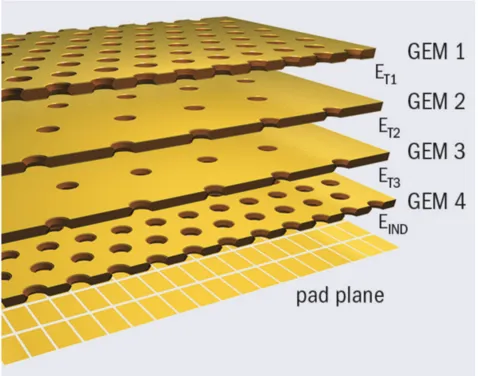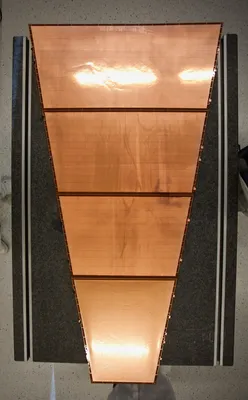The upgrade of the largest gas detector in the world: the ALICE GEM-TPC project

The world’s largest Time Projection Chamber (TPC) is the main device for tracking and particle identification of the ALICE experiment at CERN. The particles are formed when lead ions collide with almost speed of light. Only at these emerging extreme temperatures and particle densities, the strong nuclear force can be overcome so that the protons and neutrons of the lead nuclei “melt” to plasma of “free” quarks and gluons for a short period of time. After diverging and cooling, several thousand particles such as electrons, photons or pions emerge. However, the present MWPC (Multi Wire Proportional Chamber) readout of the TPC will no longer meet the increasing readout rate requirements: from 2019 on, the LHC will deliver ion beams with lead ion bundles colliding at a rate of 50 kHz, which is about a factor of 50 above the present readout rate of the TPC. In order to study the properties of the formed quark gluon plasma, it is crucial to characterize all of the resulting particles created in such a collision. Therefore, the increased luminosity can only be exploited by significantly increasing the readout rate of the TPC.

In an extensive R&D effort it was demonstrated that the specific requirements can be reached in an amplification scheme that employs four layers of gas electron multiplier (GEM) foils, a technology that was put forward by Fabio Sauli and collaborators in the 1990s. The specific energy loss performance of the 4-GEM system, and hence the capability with which the TPC is able to identify particles, was demonstrated to be the same as for the existing MWPC chambers, and the stability against discharge is well suited for operation at the LHC in Run 3 and beyond. Figure 1 shows a schematic view of such a stack of four large-size GEM foils. During the next big upgrade at the Large Hadron Collider (LHC) at CERN, planned for 2019-2020, the quadruple GEM readout chambers will be installed in the ALICE TPC. Figure 2 shows the GEMs of the first ever built detector segment of the TPC, which notably extends over more then 1.8 m and is in fact the largest GEM-based detector ever assembled. Our group at the TU München is involved in the project for which we built all full-size prototypes, run a dedicated R&D program and are now involved actively in the production of the readout chambers and coordination duties.